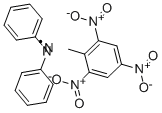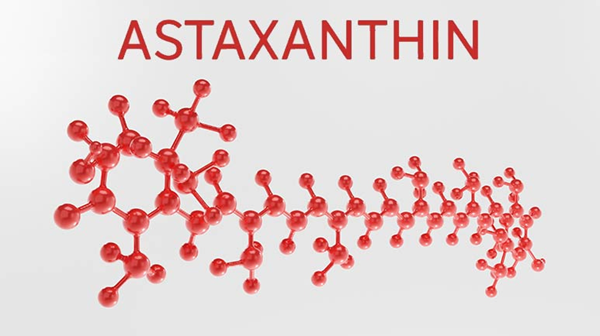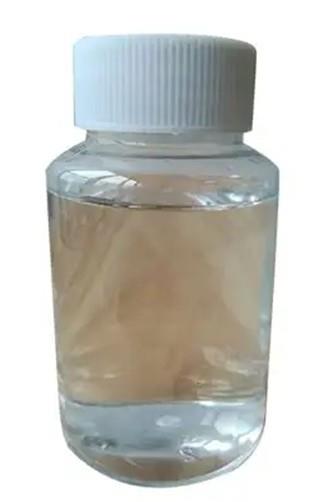Properties and Application of 2,2-diphenyl-1-picrylhydrazyl
Since its discovery over 40 years ago, the stable free radical 2,2-diphenyl-1-picrylhydrazyl (DPPH) has been extensively utilized as a homogeneous radical detector and thoroughly investigated for its magnetic properties through both static susceptibility methods and electron paramagnetic resonance (EPR), also serving as a common calibration standard for EPR studies. It is known that 2,2-diphenyl-1-picrylhydrazyl crystallizes in several polymorphic forms, often as solvates, with one of the most frequently used forms obtained by crystallization from benzene, incorporating one benzene molecule per DPPH in the crystal structure. This communication presents preliminary results of a single-crystal X-ray diffraction study on DPPH·C₆H₆.

Figure1: Picture of 2,2-diphenyl-1-picrylhydrazyl
Properties
As an acceptor molecule, 2,2-diphenyl-1-picrylhydrazyl offers distinct advantages as a colored free radical that resists dimerization, allowing concentration quantification through visible region absorption. However, this radical forms complexes with amines and potentially with aromatic hydrocarbons, interactions that may influence reaction kinetics. Additionally, 2,2-diphenyl-1-picrylhydrazyl can induce steric effects not typically observed with smaller radical species. 2,2-Diphenyl-1-picrylhydrazyl (DPPH) is a stable radical exhibiting strong absorption at 517 nm, whose absorbance decreases proportionally with radical consumption through proton exchange reactions, accompanied by a visible color transition from purple to yellow. This radical serves not only for precise titration of oxidizable groups in biomolecules but also for evaluating the antioxidant capacity of complex mixtures such as plant oils, many of which contain high concentrations of monoterpenes. The absorbance of 2,2-diphenyl-1-picrylhydrazyl (DPPH) at 517 nm in methanol and acetone decreased by 20 and 35% for 120 min at 25 °C under light, respectively; in the dark it did not change significantly for 150 min. Decomposition of DPPH under 21% oxygen after 90 min under light was significantly higher than that under 1% oxygen. Absorbance of DPPH in pH 4 buffer solution in methanol, and in pH 10 buffer solution in acetone, decreased by 55 and 80%, respectively, under light for 120 min. [1]
Radical Quenching Activity
The stable free radical 2,2-diphenyl-1-picrylhydrazyl (DPPH·) has been extensively employed to evaluate the free radical-scavenging capacity of various dietary antioxidant polyphenols. Our laboratory previously developed the first modification to the original methodology based on 2,2-diphenyl-1-picrylhydrazyl. Since DPPH· is a stable radical, this antioxidant assay is more straightforward to implement compared to other methods requiring in situ radical generation under experimental conditions. However, previous attempts to assess carotenoid radical scavenging efficacy using this approach were unsuccessful due primarily to spectroscopic interference at the wavelength used to monitor DPPH· consumption during the oxidation reaction. A novel methodology has been established for chromophoric substances exhibiting similar light absorption characteristics to the assay reagent (DPPH·). This optimized protocol was applied to measure the antioxidative effectiveness of six commonly consumed carotenoids—lycopene, α-carotene, β-carotene, β-cryptoxanthin, lutein, and zeaxanthin—by quantifying their radical scavenging efficiency in DPPH·-containing organic solutions, while also investigating the structural determinants underlying their antioxidant capacity against DPPH·.[2]
Reaction with Secondary Amines
The reaction between 2,2-diphenyl-1-picrylhydrazyl (DPPH) and N-phenyl-1-naphthylamine, N-phenyl-2-naphthylamine, diphenylamine, and methylaniline has been investigated, demonstrating a predominant hydrogen abstraction mechanism. The consumption of 1-1.15 moles of secondary amine per two moles of 2,2-diphenyl-1-picrylhydrazyl yields 1.7-1.8 moles of 2,2-diphenyl-1-picrylhydrazine along with secondary products. The reaction kinetics of 2,2-diphenyl-1-picrylhydrazyl with N-phenyl-1-naphthylamine exhibit first-order dependence on both reactants. In contrast, reactions between DPPH and the other amines are inhibited by the primary product 2,2-diphenyl-1-picrylhydrazine, resulting in complex overall kinetics. Through initial rate measurements, second-order rate constants and activation energies have been determined, and potential reaction mechanisms are discussed. [3]
Application
2,2-Diphenyl-1-picrylhydrazyl (DPPH) is a stable free radical commonly utilized for screening phenolic compounds with high free radical scavenging capacity (Wettasinghe & Shahidi, 2000). When hydrogen atoms or electrons are transferred to the unpaired electron of 2,2-diphenyl-1-picrylhydrazyl, the absorbance at 515-517 nm decreases proportionally with the increasing formation of non-radical DPPH species (Ancerewicz et al., 1998). Conventionally, high free radical scavenging capacity is considered indicative of strong antioxidant activity, and the DPPH assay has become a fundamental screening method for identifying novel antioxidant compounds from organic solvent extracts of natural resources including spices, herbs, fruits, and vegetables.
Reference
[1] Ozcelik B. Effects of Light, Oxygen, and pH on the Absorbance of 2,2-Diphenyl-1-picrylhydrazyl[J].Journal of Food Science, 2003.
[2] Behrendorff et al. 2,2-Diphenyl-1-picrylhydrazyl as a screening tool for recombinant monoterpene biosynthesis, Microbial Cell Factories 2013, 12:76.
[3] Jime′nez-Escrig, Evaluation of free radical scavenging ofdietary carotenoids by the stable radical2,2-diphenyl-1-picrylhydrazylAntonio, Journal of the Science of Food and Agriculture, 2000, 80:1686.
See also
Lastest Price from 2,2-diphenyl-1-picrylhydrazyl manufacturers

US $1.00/g2025-04-21
- CAS:
- 1898-66-4
- Min. Order:
- 1g
- Purity:
- 99.0%-100.00%
- Supply Ability:
- 2kg/month


